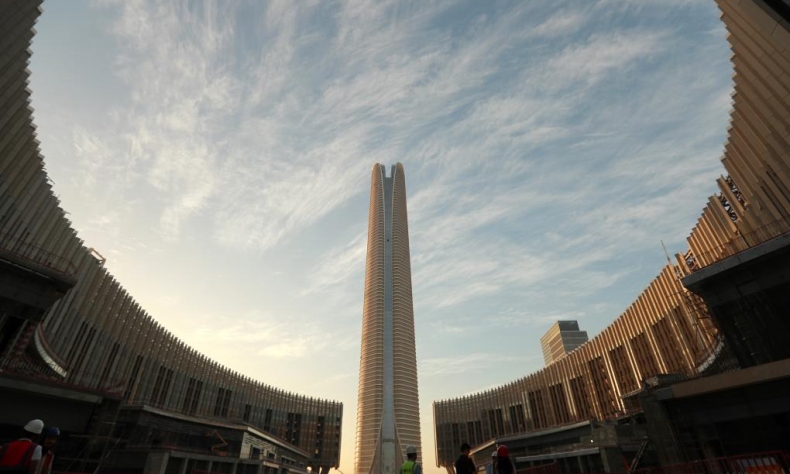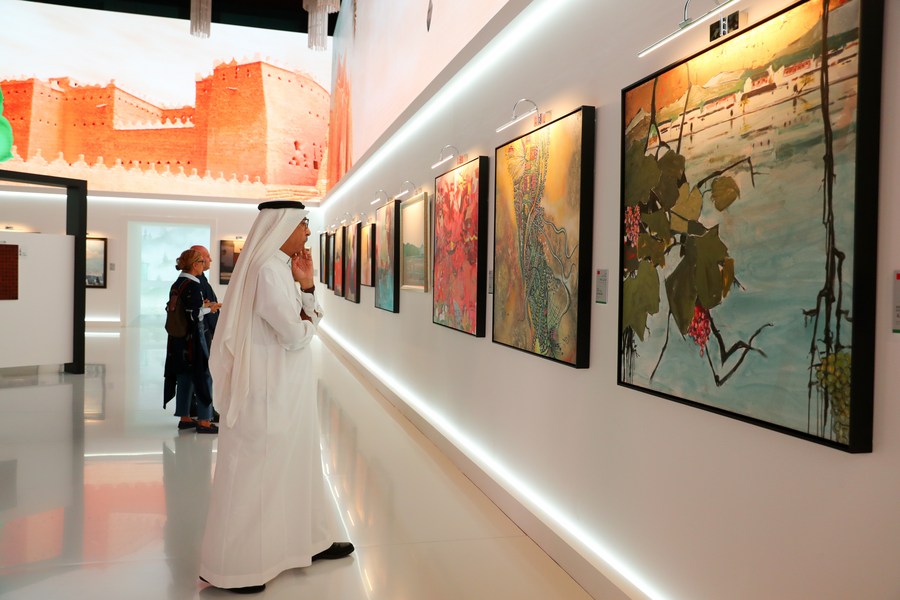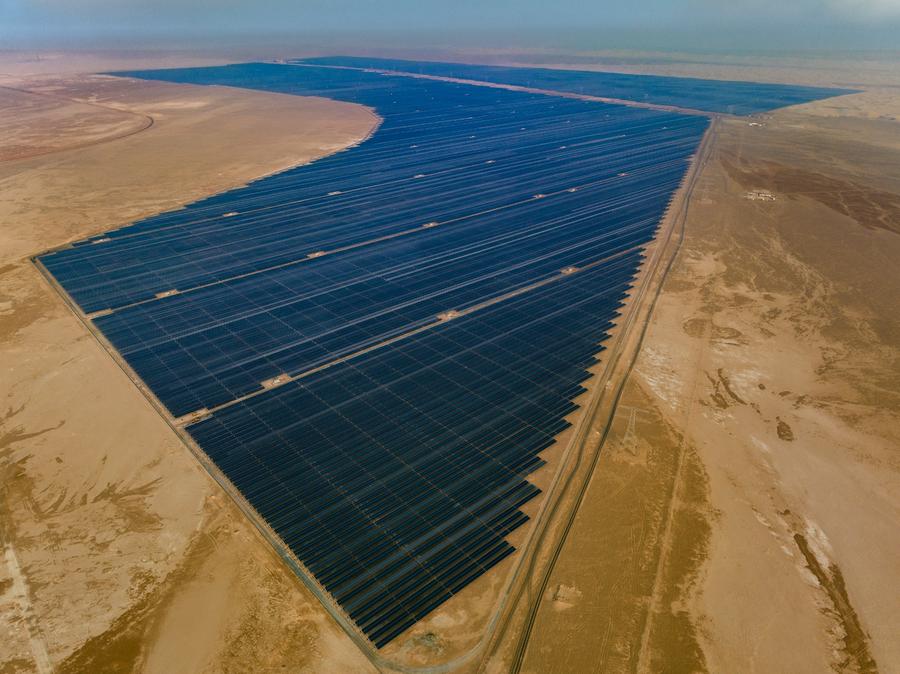A Work in Progress

The Sino-Arab connection has grown into a vibrant economic, political and cultural partnership.
China-Arab cooperation is a dynamic and multifaceted rapport that has evolved over the past decades and today transcends economic interests.
The 10th Ministerial Conference of the China-Arab States Cooperation Forum (CASCF), held in Beijing on May 30, marked a renewed commitment to cooperation in different sectors, including trade, investment, infrastructure, energy and technology.
The two decades since the forum’s launch have seen a significant rise in bilateral trade, significant infrastructure projects and increased cultural exchange.
The partnership is driven by a shared vision of peace, development and prosperity, with mutual respect, mutual non-interference in internal affairs, and a commitment to a multipolar world order.
The CASCF serves as a model for South-South cooperation, demonstrating the potential for mutual benefit and progress in a globalized world. (The Global South refers to the nations of the world that are considered to have a relatively low level of economic and industrial development and are typically located to the south of more industrialized nations—Ed.)
It offers a powerful force for stability and development, offering a compelling alternative to traditional geopolitical dynamics.
Common interests and values
The Sino-Arab connection has grown into a vibrant economic, political and cultural partnership, with, for instance, bilateral trade between China and Arab countries increasing from roughly $36.7 billion in 2004 to more than $398 billion last year.
Chinese investments in the Arab world have surpassed $20 billion, focusing on infrastructure, energy and technology. The Belt and Road Initiative (BRI), a China-proposed strategy to boost connectivity along and beyond the ancient Silk Road routes, has connected Arab countries with Eurasian markets and facilitated economic development.
China has become a major importer of Arab oil and gas, securing essential energy supplies for its rapidly growing economy. Chinese companies are actively participating in Arab countries’ efforts to diversify their energy portfolios, investing in renewable energy projects and advancing sustainable solutions.
Cultural exchange between China and the Arab world has also gained momentum, with rising numbers of students, academics and artists traversing the Silk Road of knowledge.

China and the Arab world share a deep-rooted cultural, historical and philosophical connection. Both civilizations value family, community and tradition as pillars of social stability and individual fulfillment. They appreciate hospitality and generosity, often welcoming strangers with open arms. Both cultures preserve their rich traditions through calligraphy, art and storytelling. They have navigated centuries of change, forging resilience and adaptability. Their shared experiences of historical empires, religious diversity and cultural exchange have fostered a mutual understanding of the complexities of navigating a changing world.
Education, knowledge and intellectual pursuits are also emphasized, fostering a learned citizenry. These shared values provide a solid foundation for ongoing collaboration and mutual understanding, cultivating a future of shared prosperity and cultural appreciation.
The May conference marked a significant step in strengthening the strategic partnership between China and the Arab world. The meeting, attended by leaders from 22 Arab countries, focused on economic cooperation, infrastructure development, trade and investment. Agreements were signed to lift connectivity through the BRI, foster industrial cooperation and promote joint ventures in key sectors.
The conference also emphasized the need for increased political coordination on regional and global issues, particularly in the context of rising geopolitical tensions.
Participants stressed the importance of upholding international law, promoting peaceful conflict resolutions and rejecting unilateralism and bullying tactics. Another major topic was that of cultural exchange, with attendees recognizing the role of education, tourism and cultural programs in building understanding and trust between China and the Arab world.
On the agenda
Another major topic was the ongoing Palestinian-Israeli conflict, with the two-state solution remaining an issue of agreement. The two-state solution would be on the basis of United Nations resolutions and international law, while Israel and Palestine living side-by-side in peace and security with Jerusalem as the capital of both states.
Arab states emphasized the Palestinian people’s right to self-determination and called for a peaceful solution based on international law. China, however, expressed a desire for a negotiated settlement, emphasizing the need for dialogue and compromise. The conference highlighted the complex nature of the issue and the need for continued dialogue and understanding. It served as a platform for an open exchange of perspectives, paving the way for future collaborations and potential solutions to global challenges.

This conference also marked a turning point, as it blueprinted a future characterized by sustainability, technological progress and joint efforts.
Reflecting the changing global landscape, the agenda revolved around the interconnected themes of a green economy, digitization and artificial intelligence (AI).
Discussions ranged from devising strategies for sustainable development through green technologies and initiatives, to harnessing the transformative potential of digitalization in sectors such as finance, healthcare and education.
Moreover, the gathering shed light on the immense possibilities AI offers in driving innovation, improving efficiency and tackling urgent issues like climate change.
This convergence of interests underscored the shared belief that prosperity lies in harnessing these influential forces for mutual gain. The meeting basically laid the groundwork for a more sustainable and digitally empowered future, uniting China and the Arab world in their endeavor to shape a brighter tomorrow.
However, challenges such as geopolitical competition between the U.S. and China, human rights and freedom of expression issues, and the delicate balance between China’s economic dominance and Arab states’ autonomy and resource control all persist.
Constructive engagement is crucial for addressing these concerns. The gathering had to move beyond symbolic gestures and forge tangible partnerships.
China and the Arab world have the potential to enhance media cooperation through social media and online platforms. This could help bridge cultural gaps, promote understanding and strengthen economic and political ties. Social media offer a platform for sharing stories, perspectives and cultural experiences, fostering a sense of interconnectedness. Joint production of documentaries, news articles and social media campaigns can showcase the region’s strengths and achievements. Exchange of media professionals through workshops and training programs can equip journalists and content creators with cross-cultural communication skills. By leveraging these platforms, China and the Arab world can create a more informed global community, paving the way for a future based on collaboration, mutual respect and shared prosperity.
The author is an Egyptian economist and director of the Asia Center for Studies and Translation.
 Facebook
Facebook
 Twitter
Twitter
 Linkedin
Linkedin
 Google +
Google +










